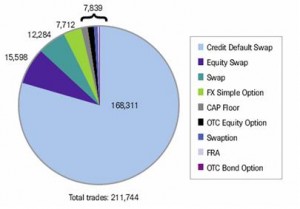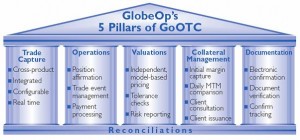Compliance Guide for New Hedge Fund Managers
Like any new business a hedge fund manager must comply with state and local ordinances, and make local business filings. However, when launching a hedge fund, a manager may become so consumed with preparing launch documents, opening prime brokerage accounts and, most importantly, meeting with potential investors that these formalities might be overlooked. In response to numerous questions from our clients, we prepared this guide for managers located in New York, San Francisco, and Chicago. Please contact your attorney if you have questions about these or any other locations.
Because most manager entities are formed in Delaware, but are operating in another state, it is necessary to register them in their home state; this process is also known as qualifying the entity to conduct business, or applying for authority to conduct business, in the state where they are located. Additional requirements typically include state and local taxes, payroll and other employment matters and city business licenses.
A checklist and quick reference table are provided as links at the bottom of this post. All forms, procedures, fees, taxes or other requirements discussed below are subject to change by the state and local authorities; this guide is not intended to be an exhaustive list of all possible requirements in these locations. Please confirm any requirements with your attorney or the authority in question before making any filings.
New York, New York
New York State Authority to Conduct Business. Delaware limited liability companies (“LLCs”) and limited partnerships (“LPs”) must apply for authority to conduct business in New York State by filing an Application for Authority (“NY Application”) with the Department of State – Division of Corporations, along with a Certificate of Existence (called a Certificate of Good Standing in Delaware) from the state of formation (“COE”). New York requires that the COE is dated within one year of the date the NY Application will be filed.
New York State Certificate of Publication. Once the NY Application has been certified by the Department of State, the manager must publish in two newspapers a copy of the application for authority or a notice related to the qualification of the entity. Publication must be done in the specific newspapers designated by the clerk of the county in which the manager is located. After publication, the printer or publisher of each newspaper will provide an affidavit of publication. A Certificate of Publication with the affidavits of publication of the newspapers attached must be submitted to the Department of State – Division of Corporations. The publication process must be completed within 120 days after the filing of the NY Application.
Please also see our post on the New York Publication Requirement.
New York State Workers’ Compensation. Any business operating in New York State must have workers’ compensation coverage for all employees. Employers can obtain a workers’ compensation insurance policy with a private carrier, with the New York State Insurance fund or through self-insurance. Failure to carry workers’ compensation insurance constitutes a misdemeanor or a felony punishable by a fine of $1,000 up to $50,000. The level of offense depends upon whether an employer has five or more employees and whether the violation is a first or a repeated offense. The Workers’ Compensation Board may also issue a stop work order to any business that fails to obtain a policy or owes a fine to the Board. Failure to keep the required records is punishable by fines of $5,000 to $10,000 for a first-time violation.
New York State Disability Coverage. Any business operating in New York State with employees must also provide disability benefits coverage. The law provides for the payment of cash benefits to employees who have become disabled because of injuries or illnesses that have no connection to their employment, and for disabilities arising from pregnancies. The law allows, but does not require, an employer to collect contributions from its employees to offset the cost to provide this benefit. Employers may obtain coverage through a private carrier, the New York State Insurance fund or through self-insurance. Failure to obtain disability benefits coverage constitutes a misdemeanor, punishable by a fine of $100 to $500 and/or imprisonment for not more than one year. Additionally, an employer without coverage will be liable for any benefits due to an injured employee.
New York State Unemployment Insurance. Employers must file a Quarterly Combined Withholding, Wage Reporting and Unemployment Insurance Return with the New York State Department of Labor. Generally, all employment performed for an employer is covered whether it is on a part-time, full-time, temporary, seasonal, or casual basis. If all required parts of the return are not received by the due date, the return is considered delinquent. The penalty for failure to file is the greater of $1,000 or $50 per employee listed on the latest quarterly return, up to a maximum fine of $10,000.
New York City Unincorporated Business Income Tax. The Unincorporated Business Tax (the “UBT”) is imposed on partnerships and limited liability companies, which would include most hedge funds and investment managers. The UBT is equal to four percent of taxable income allocable to New York City, but the net effective tax rate for hedge fund managers could be near two percent after tax credits and deductions. This stems from the deductibility of local business tax payments on federal taxes, and a twenty-three percent credit for UBT taxes against New York City personal income liability. At present, the New York City Administrative Code taxes fees earned by managers, but carried interest may be exempt. To obtain some relief from this tax, managers located in New York City typically form a separate entity to serve as the general partner of their onshore funds, rather than having the manager serve as general partner.
New York City Commercial Rent Tax. A business must file a Commercial Rent Tax Return if the occupied premises are located in Manhattan, south of 96th Street, and the annual or annualized gross rent paid for such location is at least $250,000. This tax also applies to: (i) those who occupy space in buildings they themselves own, individually or jointly with another person other than a spouse; (ii) those who occupy space in buildings owned by corporations where they are an officer or holder of all or part of the corporation stock; (iii) a corporation, occupying space in a building that is owned by a subsidiary corporation or by a parent corporation; and (iv) a corporation, occupying a space in building owned by an officer or stockholder of the corporation.
New York City Waste Removal and Recycling. A commercial business is required to dispose of its waste, including recyclable materials, through a private disposal company. All businesses are required to recycle office paper, corrugated cardboard, magazines, catalogs, and newspapers. Businesses must post signs notifying employees, and customers where relevant, about what and how to recycle and must place labeled recycling containers where waste is routinely discarded. Usually the building management makes arrangements with a disposal company for removal of recycling and waste for the entire building. Regardless of a building's recycling arrangements, every company is required by law to maintain separate labeled recycling bins for paper. Fines will be levied for violations.
San Francisco, California
California Business Registration. LLCs and LPs must qualify to transact business in California by filing an Application for Registration (“CA Application”) and a COE with the California Secretary of State. In addition, within 90 days after the CA Application has been filed, an LLC must file a Statement of Information (“SOI”) with the California Secretary of State. Thereafter, the SOI is due every other year on or before the anniversary of the initial SOI filing. LPs are not subject to the SOI filing requirements.
California Franchise Tax Board. Registered LLCs and LPs are subject to an $800 annual tax even if they conduct no business in California. They may also be subject to an annual fee based upon total income from all sources derived or attributable to California. Additionally, an entity that has members or partners who are not residents of California must file consents signed by the nonresident individuals and foreign entity members to show their consent to California’s jurisdiction to tax their distributive share of income attributable to California sources. The LLC or LP must pay the tax for every nonresident member or partner who does not sign the consent.
California Withholding on Distributions. LPs and LLCs must withhold 7% on distributions of California source income made to nonresident partners or members when distributions to a particular partner or member exceed $1,500 for the calendar year. LPs and LLCs must withhold on allocations of California source income to foreign partners and members (payees) at the maximum applicable California tax rate.
California Payroll Taxes. A business becomes subject to state payroll taxes upon paying wages over $100 in a calendar quarter to one or more employees. Wages include cash payments, commissions, bonuses, and the reasonable cash value of noncash payments (such as meals or lodging) for services performed. Once subject, an employer must complete and submit a registration form to the Employment Development Department (“EDD”) within 15 days. After registering, a business will receive a State Employment Identification Number. Employers must report wages paid, taxes withheld and pay unemployment insurance, state disability insurance and employment training tax on employee wages.
California Workers’ Compensation. California Labor Code requires employers with at least one employee to carry workers’ compensation insurance. Employers may finance liability for workers’ compensation through self-insurance, private insurance or through the California State Compensation Insurance Fund. Failure to carry workers’ compensation coverage is a misdemeanor punishable by a fine up to $10,000 and/or one year in jail. The Division of Labor Standards Enforcement can issue a stop order preventing an employer from using employee labor until coverage is obtained.
San Francisco Business Registration and Renewal. Every person or entity doing business in the City and County of San Francisco must have a valid Business Registration Certificate (“SF Certificate”). A certificate is required for businesses located outside of San Francisco that transact business or perform services within San Francisco. The registration fee varies based on a business’s estimated annual payroll tax expense.
The SF Certificate is issued annually and must be renewed by February 28th of each year. All businesses must report their taxable payroll tax expense, even if it was zero, as part of the Business Registration Renewal process. Businesses meeting a specified payroll threshold (which may be adjusted each year) are required to submit an additional Payroll Expense Tax Statement.
San Francisco Payroll Expense Tax. The tax amount is equal to 1.5% of a business’ annual San Francisco payroll expense. The recently-passed Proposition Q raised the payroll tax exemption for small businesses whose payroll expense for the year is $250,000 or less and extended the applicability of payroll expense tax to include compensation for personal services paid to owners of LPs, LLCs and other entities. If a business has at least four W-2 employees based in San Francisco, the amount of payroll included for each individual owner of a pass-through entity may be calculated under the “safe harbor provision” by adding to his or her base salary an amount equal to 200% of the average annual compensation paid to the W-2 employees of the pass-through entity whose compensation is in the top 25% of that entity's employees based in San Francisco.
Please also see our post on San Francisco Proposition Q.
San Francisco Assessor Tax. A business entity’s property is reappraised annually. This includes all property owned or leased by a business except licensed vehicles, business inventory, intangible assets or application software. Businesses that receive a property statement from the Assessor’s Office or that own taxable property with a total cost of $100,000 or more must file a 571-L business property statement each year by April 1st. The filing must detail the costs of all supplies, equipment, and fixtures, improvements, land improvements, and land and include other information requested on the form at each location. The 2010 tax rate for business property was 1.159% of the value of assessable property. Such value is determined based upon cost, tax, freight, installation and depreciation.
San Francisco Labor Laws. Three San Francisco labor laws generally apply to all employers with employees performing work within the City of San Francisco. First, the Health Care Security Ordinance requires for-profit businesses with twenty or more employees to spend a minimum amount on health care for each employee working eight or more hours per week in San Francisco. The Paid Sick Leave Ordinance entitles all employees (no minimum) working in San Francisco to paid time off when they or family members are sick or need medical care. It also sets a minimum rate of accrual for sick leave of 1 hour for every 30 hours worked; fractional accruals are not permitted. Finally, San Francisco has a minimum wage of $9.79 per hour for all employees who work in San Francisco more than two hours per week.
Exemptions for Businesses Located within the Presidio. The Presidio is an area in the city that is owned by the federal government. The Presidio Trust Act explicitly gives the Presidio Trust immunity from state and local taxes, which extends to property interests of third parties under “leases, concessions, permits and other agreements associated with Trust properties.” Under federal law only income and use taxes can be levied on federal enclaves. Because the business registration fees and payroll taxes discussed above are not income or use taxes, businesses located in the Presidio are exempt from these requirements imposed on businesses located elsewhere in San Francisco.
Chicago, Illinois
Illinois Admission to Conduct Business. An LLC must submit an Application for Admission to Transact Business and a COE authenticated within the last 60 days to the Illinois Secretary of State. An LP must submit a similar “Application for Certificate of Authority” along with a COE authenticated within the last 30 days (either, the “IL Application”).
Illinois Department of Revenue Registration. A business must register with the Illinois Department of Revenue to receive a Certificate of Registration and Illinois Business Tax number. Registration must be completed before a business makes sales, or when it hires employees. This certificate must be displayed in a prominent location
Illinois Unemployment Insurance. If a business hires employees to work in Illinois, it must register with the Department of Employment Security (“IDES”) within 30 days of the date it starts doing business in the state to receive an Illinois Unemployment Account number. On a quarterly basis, employers must file an “Employer’s Contribution and Wage Report” and pay contributions to IDES. The penalty for failure to file the report is the lesser of $5 for each $10,000 or fraction thereof of the total wages for insured work during the period, or $2,500 for each month or part thereof of such failure to file the report. The amount of the total fine is capped at the lesser of $5,000 or $10 for each $10,000 or fraction thereof of the total wages for insured work during the period.
Illinois Workers’ Compensation. All employers must obtain workers’ compensation insurance, post a notice in the workplace listing the insurance carrier and workers’ rights, and keep records of work-related injuries. Accidents involving more than three lost workdays must be reported to the Workers’ Compensation Commission. Employers may be fined up to $500 for each day without insurance, with a minimum fine of $10,000. The commission may issue a stop-work order for a knowing failure to carry insurance. Corporate officers may be held personally liable and/or sent to prison.
City of Chicago Business License. All persons who “conduct, engage in, maintain, operate, carry on or manage a business” in the City of Chicago must obtain a business license from the Department of Business Affairs and Consumer Protection (the “BACP”), unless exempted by state law or regulated by another license category. Applicants must complete a Business Information Sheet listing the business name, a detailed business description,
square footage, address, ownership information, and Illinois and federal tax numbers. Businesses operating in a properly zoned area will be automatically approved when applying; these businesses need only file a tax registration form with the city.
The business license must be posted in a conspicuous place. In the event of a violation, the BACP may issue a notice, a cease and desist order and depending on the type of business, the BACP may also confiscate personal property or make an arrest. Additionally, fines may be imposed ranging from $200 to $10,000 per day.
Chicago Employers’ Expense Tax. Businesses that employ fifty or more full-time employees who perform 50% or more of their work per calendar quarter in the City of Chicago and who earn more than $900 in a calendar quarter must pay the Employers’ Expense Tax. The tax is equal to $4.00 per employee per month. In determining the number of employees, employees of a “unitary business group” will be combined, i.e., a group of people under common ownership or control, whose business activities are in the same general line and whose members are functionally integrated through centralized management.
To help managers keep track of the filings that they should complete we have created a checklist, please see Checklist for State and Local Business Filings. For information on division contact persons that can help with information on how to complete the above filings, please see our Quick Reference and Contact Information guide. If you have questions on any of the items in this post, please feel free to contact us.
****
Cole-Frieman & Mallon LLP provides a variety of legal services to hedge fund managers including entity formation, general business issues, legal advice with respect to hedge fund seeding, employment matters and matters related to hedge fund formation. Karl Cole-Frieman can be reached at 415-352-2300; Bart Mallon can be reached directly at 415-868-5345.


